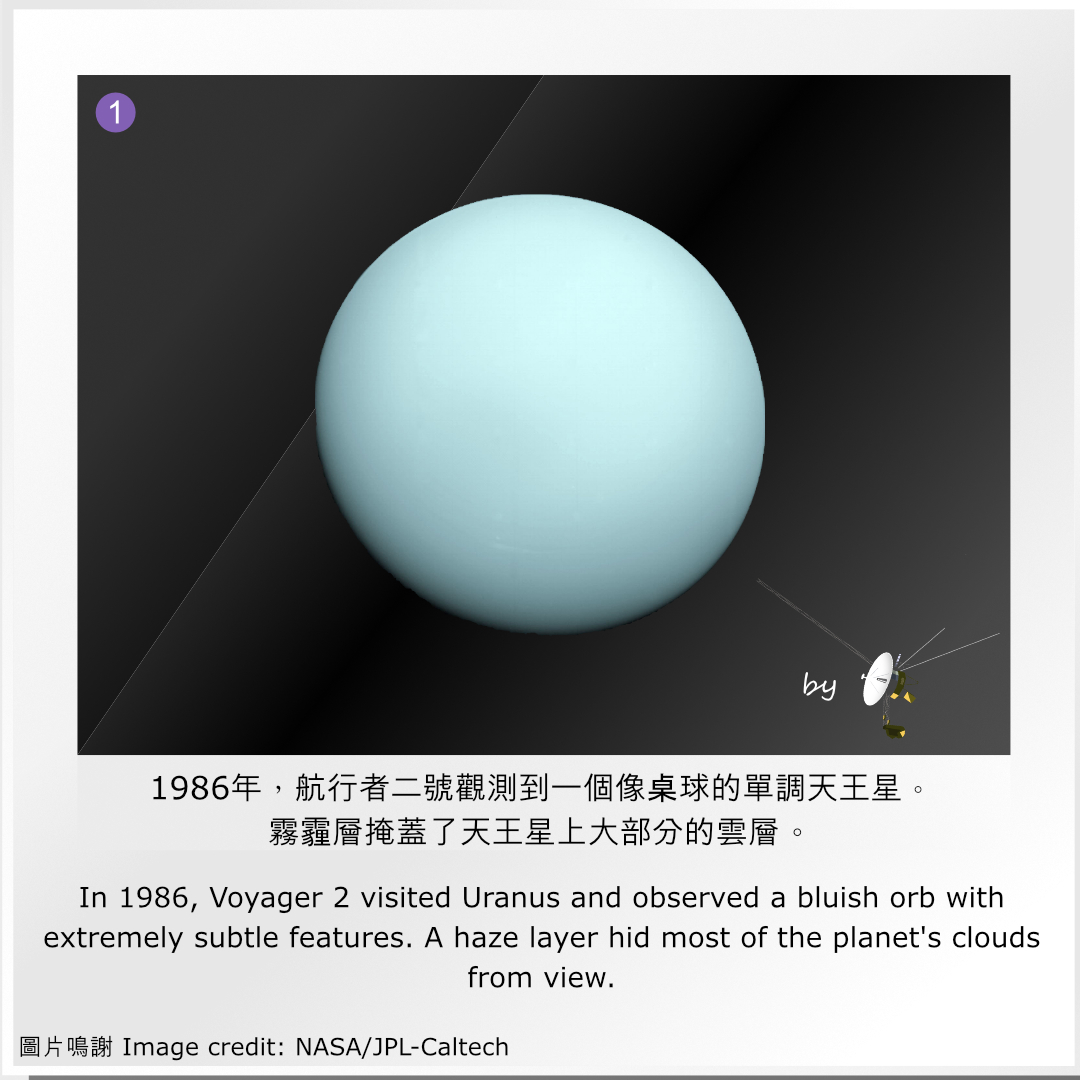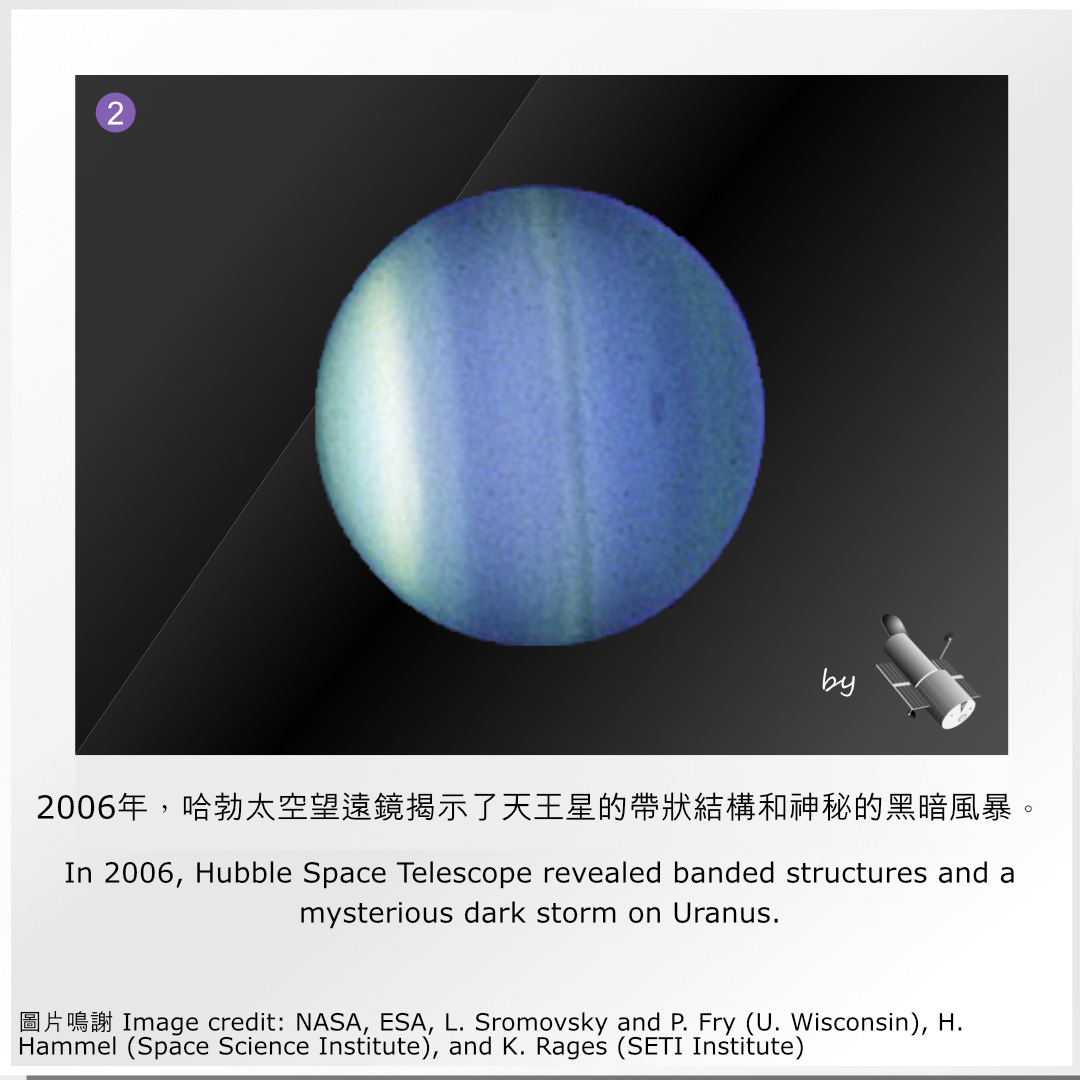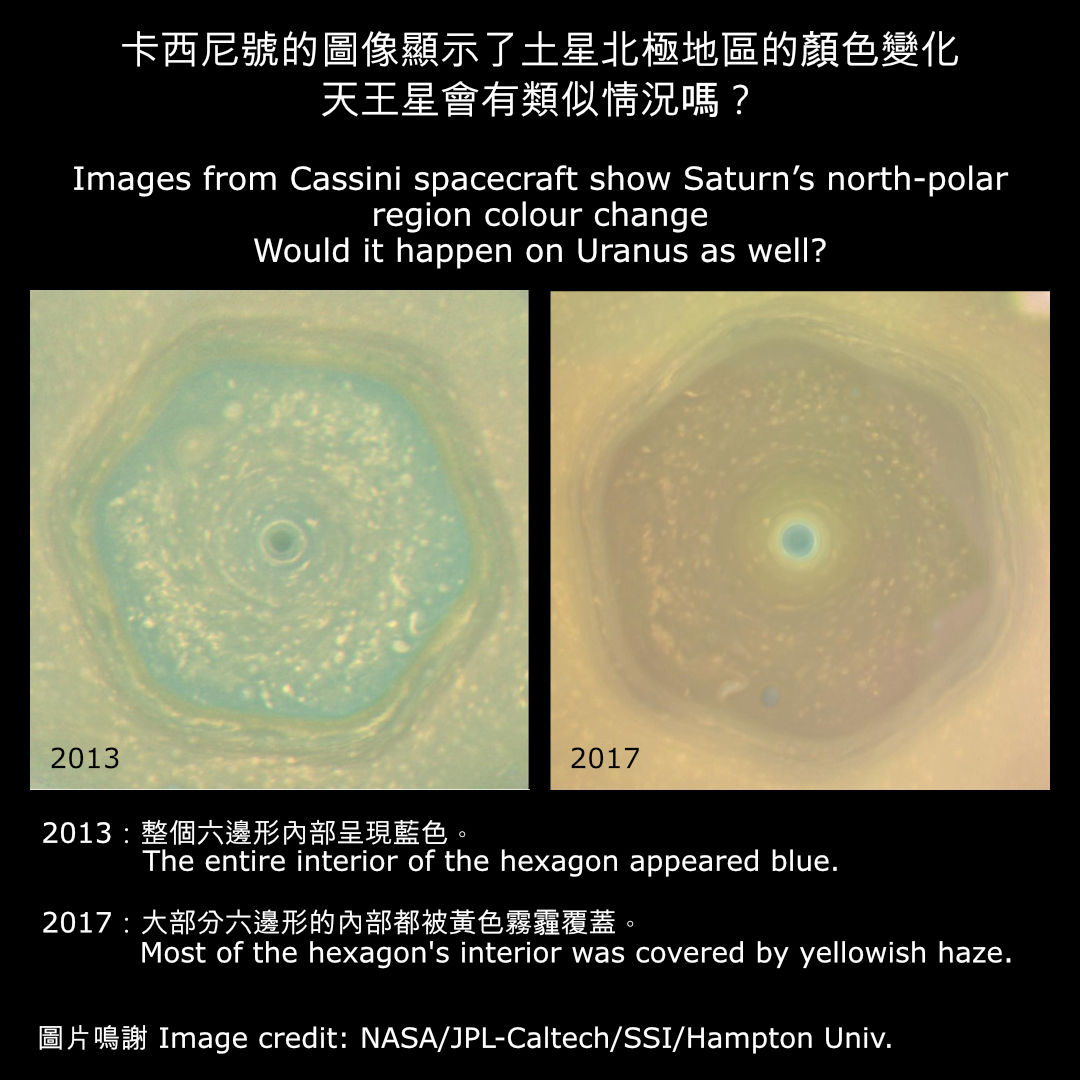As the Webb reaches its home at the 2nd Lagrangian point, after focusing and instrument calibration, it will explore the Solar System. One of the examining targets is an "Ice Giant": Uranus.
Uranus' axis of rotation is roughly parallel to its orbital plane, so Uranus spins on its side! When Voyager 2 visited Uranus in 1986, Uranus' axis of rotation pointed towards the Sun, and no matter how Uranus rotated, half of it was permanently exposed to direct sunlight and the other half was in complete darkness. At the time, the haze obscured most of the features on Uranus, which was just a pale blue sphere of uniform color.
Around 2007, Uranus' equator is pointing towards the Sun, and the entire planet was illuminated during a day on Uranus. The Hubble Space Telescope discovered that Uranus has banded structures, mysterious dark storms and various bright clouds. Uranus' atmosphere appears to have activated dramatically with sunlight, which differed from what Voyager 2 observed.
Seasonal changes affect the atmospheres of planets. For example, when Saturn enters summer, the enhanced solar ultraviolet rays cause photochemical smog caused by trace hydrocarbons (such as ethane, propane and acetylene) in the top layer of Saturn's atmosphere, forming a haze that dyes the yellow polar region. Could the same cause explain Uranus' haze?
In 2028, Uranus will once again point its axis towards the Sun. Webb will examine the seasonal changes that drive Uranus' atmosphere, and determine energy flows and transfer.







